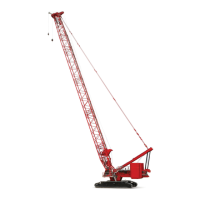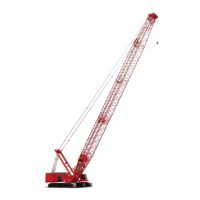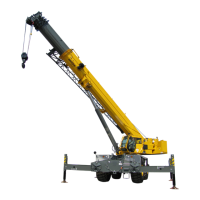Manitowoc Published 04-06-18, Control # 231-14 4-93
MLC650 VPC-MAX™ OPERATOR MANUAL SET-UP AND INSTALLATION
LOAD LINE REEVING
NOTE: The boom top can be reeved in various
configurations. See the reeving diagrams included
at the end of this section for each reeving option.
Guide Sheaves and Drums
See Figure 4-78 for identification of the load drums and the
guide sheaves.
Refer to the Reeving Diagrams at the end of this section for
rope routing over the boom top wire rope guide (7).
Once the wire rope is routed through the guide sheaves,
install all the rope guard pins, bars, and rollers to retain the
wire rope on the sheaves. Wire rope and sheaves can be
damaged if the rope is not properly retained on sheaves.
Load Block Identification
See the Boom Rigging Drawing at the end of this section for
a complete list of load blocks and hook and weight balls
available for use with this crane.
NOTE: Reference the block drawings included at the end
of this section for block assembly configurations.
Duplex Hook
Attach the load so it is balanced equally on the hook. The
lifting slings must be within the angles given in Figure 4-78
to
achieve maximum hook capacity. The duplex hook has a
hole to which an optional shackle can be attached as shown
in Figure 4-78
.
Wire Rope Specifications
Refer to the Wire Rope Specifications chart in the Capacity
Chart Manual for:
Parts of the line required to handle desired load
Wire rope length required for various boom lengths and parts
of line
Maximum spooling capacity of load drums
Load Block Reeving
For reeving of the lower boom point, see the Reeving
Diagrams at the end of this section.
Reeving in any manner other than shown can result in
excessive block twist.
WARNING
Falling Load Hazard!
Use only a load block or hook and weight ball with a
capacity equal to or greater than load to be handled.
The load block can fail if overloaded, allowing the load to
fall.
WARNING
Avoid Death or Serious Injury!
Exercise care when block is standing in vertical position,
as the potential for tipping exists. Potential causes of
tipping are unstable work area, boom movement and the
reeving process.
If work area is unstable, lay block flat on side plate.
WARNING
Falling Load Hazard!
Limit load to be handled with shackle to capacity of load
block or shackle, whichever is less.
Load block or shackle can fail if overloaded, allowing load
to fall.
CAUTION
Wire Rope Damage!
Do not hoist the load block closer to the boom point than
shown in the reeving diagrams. Improper fleet angle or
contact with other parts can damage the wire rope.
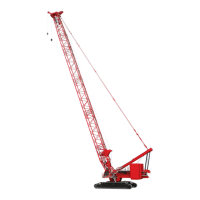
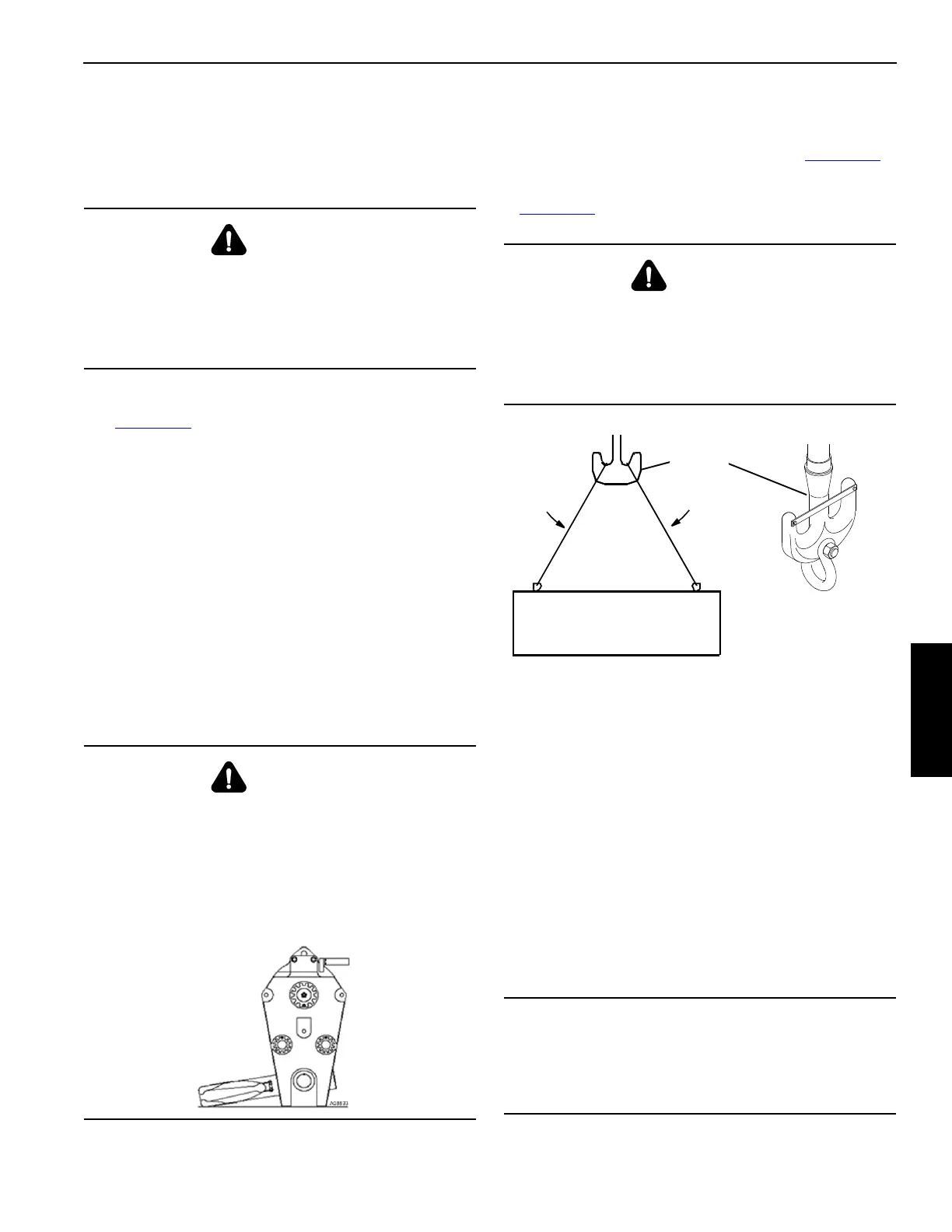